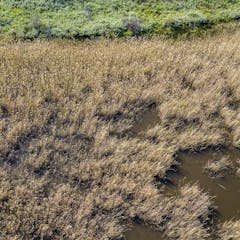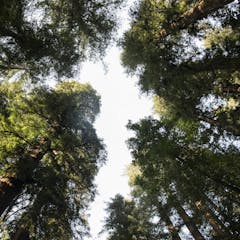
Articles on Coasts
Displaying 1 - 20 of 53 articles

Some Aussie beaches are being reshaped and coastal dunes are marching inland. We used data from aerial photography, field surveys, laser mapping and drones to study incredible rates of change.

Wetlands can prevent flooding, trap carbon and support livelihoods, as long as they are protected and managed.

Increased interest in recreational fishing with drones has led to concern about its environmental and social impact.

As seas rise, it is clear that traditional coastal defence approaches are unable to keep pace. Nature-based solutions offer considerable potential to protect coasts, people and biodiversity.

Rip currents are a leading cause of near-shore drownings, but there are effective ways to survive one. And these phenomena also play important ecological roles that are an emerging research area.

Mangroves and salt marshes pump out methane – but soak up carbon dioxide. Overall, the world’s coasts are a net greenhouse sink – and we must preserve them

Fairbourne on the west coast of Wales is at risk from both rising sea levels and river flooding.

Moving entire communities threatened by rising seas isn’t as far-fetched as it sounds.

Puerto Rico’s tourism industry is booming as nations lift COVID-19 travel restrictions, but development is displacing people who have lived along its coastlines for years.

New research shows that coast redwood trees have a surprising adaptation that helps them thrive in both wet and dry environments.

All nations must ramp up efforts to preserve and restore their coastal regions – and the time to start is right now.

Offshore oil drilling has a long history in California, but is highly unpopular today. The latest major spill is likely to fuel efforts to wind down oil and gas production statewide.

This kind of research, with consistent data collection at the same locations over time, helps support global understanding of climate change.

The Army Corps of Engineers is planning a sea wall 6 miles long and flood gates. The infrastructure might protect downtown from a hurricane storm surge, but most of the area will still be vulnerable.

Polluted oceans don’t just harm wildlife, they are a source of ill health for humans too.

Healthy seagrasses form underwater meadows teeming with fish and shellfish. A successful large-scale restoration project in Virginia could become a model for reseeding damaged seagrass beds worldwide.

Sea levels could be two metres higher by 2100. How will our relationship to the drowned coast change?

Empatheatre’s latest production is more than a play about three characters who live near the sea. It’s a model for collective consultation on how to save the ocean.

A new study estimates that mangroves prevent over $65 billion in damage from coastal storms every year, and says mangrove protection should be funded in the same way as infrastructure like seawalls.

Bangladesh is on the front lines of climate change, but factors including money, gender and religion make some Bangladeshis much more vulnerable than others. Can it find inclusive ways to cope?
